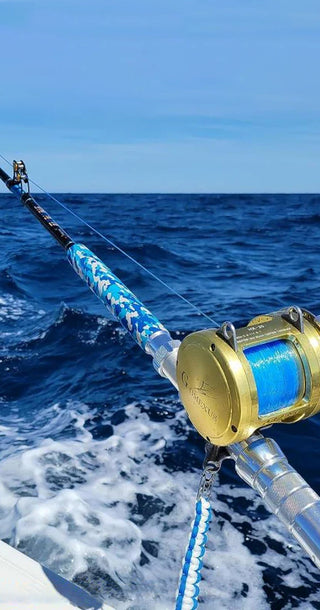Overhauling a boat is an exciting yet intricate process that requires careful planning and execution. Whether you're upgrading for better performance, longevity, or just the joy of having a like-new vessel, there are several critical features to consider. In this comprehensive guide, we'll delve into the essential elements you need to focus on when overhauling your boat.
Hull and Deck
Inspecting the Hull
The hull is the backbone of your boat, and its condition is paramount for safety and performance. Start by conducting a thorough inspection for any cracks, blisters, or other forms of damage. Small cracks can lead to significant problems if left unaddressed.
Repairing Damage
Once damage is identified, repair it promptly. Use marine-grade fillers and resins to fix cracks and blisters. If the damage is extensive, consult a professional to ensure proper repair techniques are used.
Repainting the Hull
A fresh coat of paint not only enhances the aesthetic appeal but also provides protection against the elements. Consider using high-quality marine paint that offers durability and resistance to saltwater and UV rays.
Applying Non-Skid Surfaces
For safety, apply new non-skid surfaces on the deck. These surfaces reduce the risk of slipping, especially in wet conditions. There are various types of non-skid paints and pads available, so choose one that best suits your needs.
Replacing Worn Hardware
Inspect all hardware such as cleats, chocks, and railings. Replace any worn or corroded pieces to ensure safety and functionality. Opt for stainless steel hardware for its durability and resistance to corrosion.

Mechanical Systems
Engine Overhaul
The engine is the heart of your boat, and maintaining it is crucial. If your engine is old or not performing well, consider overhauling or replacing it. An efficient engine ensures smooth and reliable operation.
Regular Maintenance
Regularly service the engine to keep it in top condition. This includes changing the oil, replacing filters, and checking the cooling system. Keeping up with maintenance schedules can extend the life of your engine.
Steering System
The steering system is another critical component that requires attention. Inspect the steering cables, hydraulic lines, and rudder for any signs of wear and tear. Replace or service parts as needed to ensure precise and responsive steering.
Pumps and Tanks
Inspect and service all pumps and tanks on your boat. This includes bilge pumps, freshwater tanks, and fuel tanks. Ensure they are free of leaks and functioning correctly. Upgrading to modern, efficient pumps can improve overall performance.
Updating Electronics
Modern electronics can significantly enhance your boating experience. Update outdated navigation and communication equipment to the latest technology. This includes GPS, radar, and VHF radios. Not only does this improve functionality, but it also enhances safety on the water.
Enhancing Navigation
Consider integrating a multi-function display (MFD) that combines navigation, radar, and sonar systems. These devices offer comprehensive information at a glance, making navigation more intuitive and safer.
Electrical Systems
The electrical system of your boat is vital for operating various equipment and ensuring safety. Inspect all wiring and replace any corroded or damaged sections. Old wiring can be a fire hazard and should be updated with marine-grade wires.
Upgrading Batteries
Modern battery banks and charging systems can provide reliable power for extended periods. Consider installing lithium-ion batteries, which offer longer life and better performance compared to traditional lead-acid batteries.
Backup Power Sources
For added security, install backup power sources such as solar panels or wind generators. These systems can provide auxiliary power, ensuring your boat remains operational even if the primary power source fails.
Safety Gear
Safety should always be a priority when overhauling a boat. Replace any expired safety equipment such as life jackets, flares, and fire extinguishers. Make sure all safety gear is up-to-date and easily accessible.
Emergency Communications
Install modern emergency communications and tracking devices. These can be lifesavers in critical situations, providing a reliable means to call for help and be located quickly.
Compliance with Regulations
Ensure your boat meets all safety and regulatory requirements. This includes having the correct number and type of safety gear, proper documentation, and adhering to navigation and environmental regulations.
Interior Upgrades
Reupholstering and Cabinetry
The interior of your boat should be comfortable and functional. Reupholster cushions to give your boat a fresh look and feel. Replace any damaged cabinetry to enhance storage and aesthetics.
Lighting and Entertainment
Upgrade the lighting system to LED lights, which are energy-efficient and offer better illumination. Enhance your entertainment system with modern audio and visual equipment to make your time on the boat more enjoyable.
Insulation and Ventilation
Improve insulation and ventilation to maintain a comfortable interior climate. Proper insulation helps regulate temperature, while good ventilation prevents mold and mildew growth. Consider installing vents or fans in strategic locations to enhance airflow.
Comfort Enhancements
Add features such as air conditioning or heating systems if you plan to spend extended periods on your boat. These upgrades can make a significant difference in comfort, especially in extreme weather conditions.
Galley Upgrades
The galley, or kitchen area, is a focal point for many boaters. Upgrade appliances to energy-efficient models. Replace old countertops with durable, easy-to-clean materials like Corian or granite.
Storage Solutions
Maximize storage space with smart solutions such as foldable furniture and built-in cabinets. Utilize every inch of available space to keep the galley organized and functional.
Head (Bathroom) Improvements
The head, or bathroom, is another crucial area to focus on. Upgrade to a more efficient marine toilet and install a proper ventilation system to prevent odors. Consider adding a shower or improving the existing one for better comfort.
Water Systems
Ensure the freshwater system is in good working condition. This includes checking for leaks and replacing old pipes or hoses. Consider installing a water filtration system for clean and safe drinking water.
Sleeping Quarters
Comfortable sleeping quarters are essential for extended stays on the boat. Upgrade mattresses and bedding for better rest. Add blackout curtains to ensure a good night's sleep, even in bright marinas.
Privacy Features
Install privacy features such as curtains or dividers in shared sleeping areas. This adds comfort and personal space for all passengers.
Upholstery and Fabrics
Choose durable, marine-grade fabrics for reupholstering seats and cushions. These materials are designed to withstand the harsh marine environment and last longer.
Color Schemes
Opt for color schemes that are not only visually appealing but also practical. Light colors can make small spaces feel larger, while darker shades can hide stains and wear better over time.
Flooring
Upgrade the flooring to a material that is both durable and easy to clean. Options include marine carpet, vinyl, or synthetic teak, which offers the look of real wood without the maintenance.
Non-Skid Options
For safety, consider non-skid flooring options, especially in high-traffic areas. This can prevent slips and falls, making the boat safer for all occupants.
Safety Gear and Modernizations
Upgrading Safety Gear
Safety should always be the top priority when overhauling a boat. Ensuring that all safety equipment is up-to-date and in good condition can mean the difference between a minor inconvenience and a major emergency.
Life Jackets
Replace any old or expired life jackets with modern, Coast Guard-approved models. Ensure you have enough life jackets for every passenger, and consider adding a few extras for guests.
Flares and Fire Extinguishers
Check the expiration dates on all flares and fire extinguishers. Replace any that are outdated and ensure they are stored in easily accessible locations.
Emergency Communications
Modernizing your boat's emergency communication systems can significantly enhance safety.
VHF Radios
Install a high-quality VHF radio for reliable communication with other boats and emergency services. Make sure it has Digital Selective Calling (DSC) for sending distress signals quickly.
Satellite Phones
Consider adding a satellite phone for communication in remote areas where VHF and cellular signals might not reach. This ensures you can always call for help, no matter where you are.
Tracking Devices
Emergency tracking devices, such as EPIRBs (Emergency Position Indicating Radio Beacons) and PLBs (Personal Locator Beacons), can be lifesavers. These devices send distress signals and your location to rescue services, ensuring help is on the way quickly.
Navigation and Lighting
Proper navigation and lighting systems are essential for safe boating, especially at night or in poor visibility conditions.
Navigation Lights
Ensure all navigation lights are functioning correctly and meet regulatory standards. Upgrade to LED navigation lights for better visibility and energy efficiency.
Deck and Cabin Lighting
Upgrade the deck and cabin lighting to LED lights. They are more energy-efficient, provide better illumination, and have a longer lifespan compared to traditional bulbs.
Modernizing Your Boat
In addition to safety gear, modernizing various systems on your boat can enhance comfort, efficiency, and overall enjoyment.
Smart Technology
Integrate smart technology into your boat for added convenience. This can include smart thermostats, lighting systems, and security cameras that can be controlled remotely via smartphone apps.
Entertainment Systems
Upgrade your boat's entertainment systems to include modern audio and visual equipment. Consider installing a marine-grade sound system, smart TVs, and satellite or streaming capabilities.
Environmental Considerations
When overhauling your boat, it's important to consider the environmental impact and strive for eco-friendly options wherever possible.
Waste Management
Install waste management systems that minimize environmental impact. This includes holding tanks for sewage and gray water, and systems for proper disposal of waste.
Energy Efficiency
Opt for energy-efficient appliances and systems. Solar panels and wind generators can provide renewable energy, reducing reliance on fuel-powered generators and decreasing your carbon footprint.
Customization and Personalization
Personalizing your boat can make it truly feel like your own and enhance your overall boating experience.
Custom Outfitting
Consider custom outfitting options such as personalized seating arrangements, custom cabinetry, and bespoke interiors. These additions can improve both functionality and aesthetics.
Paint and Graphics
Give your boat a unique look with custom paint jobs or graphics. This not only enhances its appearance but also allows you to express your personal style.
Maintenance Tips
Maintaining your boat properly after the overhaul is crucial to ensure longevity and optimal performance.
Regular Inspections
Conduct regular inspections of all systems and components. This helps identify potential issues early and allows for timely repairs, preventing more significant problems down the line.
Cleaning and Care
Keep your boat clean and well-maintained. Regularly wash the exterior to remove salt and grime, and clean the interior to prevent mold and mildew. Use appropriate cleaning products designed for marine use.
Documentation and Records
Keeping thorough documentation and records of all maintenance, upgrades, and repairs is essential.
Maintenance Logs
Maintain detailed logs of all maintenance activities, including dates, services performed, and parts replaced. This not only helps in tracking the condition of your boat but also adds value when it comes time to sell.
Safety Drills
Conduct regular safety drills with your crew or family members. This ensures everyone knows what to do in an emergency and helps keep safety procedures fresh in their minds.
Training and Education
Staying informed and educated about boating is key to a safe and enjoyable experience.
Boating Courses
Take advantage of boating courses and certifications offered by various organizations. These courses cover a range of topics from basic seamanship to advanced navigation and safety procedures.
Staying Updated
Stay updated with the latest boating regulations, safety protocols, and technological advancements. Subscribing to boating magazines, joining boating clubs, and participating in online forums can keep you informed.
Conclusion
Overhauling a boat is a rewarding endeavor that, when done correctly, can extend the life of your vessel and enhance your time on the water. By focusing on critical areas such as the hull, mechanical and electrical systems, interior upgrades, safety gear, and modernizations, you can ensure your boat is not only functional but also comfortable and safe. Regular maintenance and staying informed about best practices will help you enjoy your boating experience to the fullest. Whether you're navigating familiar waters or exploring new horizons, a well-overhauled boat will serve you reliably for years to come.



